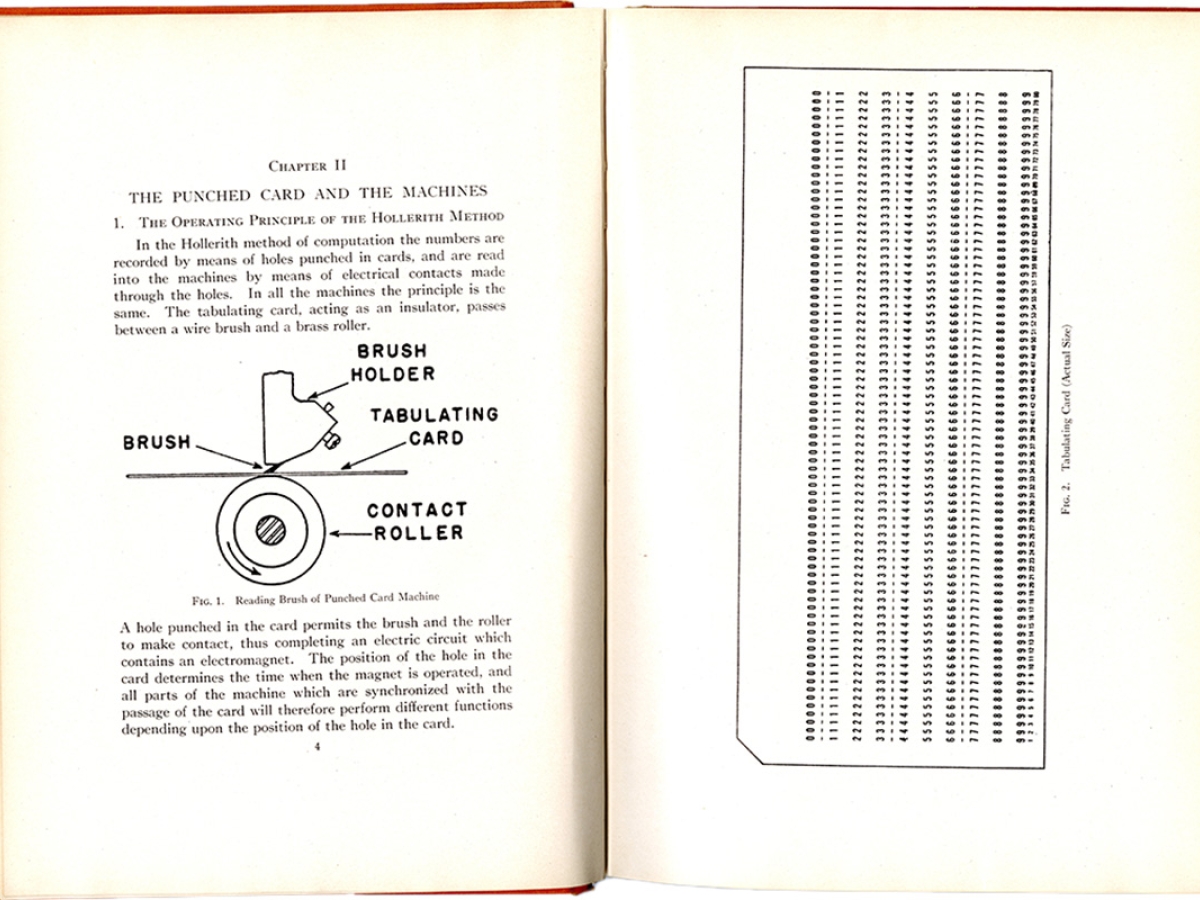2025 marks the 300th anniversary of a technology associated with the computer age, but with roots in the Industrial Revolution. In 1725, French silk weaver Basile Bouchon invented the use of a paper tape with punched holes to automate the work of a loom. By the 19th century, punchcard-controlled looms produced sophisticated textiles, including fabric "pages" woven from silk to simulate the leaves of a medieval manuscript. Computing pioneer Charles Babbage first envisioned adapting punched cards to computing; in the early computer age, they were the primary means for data entry and processing. In Punched Card Methods in Scientific Computation, Wallace Eckert shared his work using punched cards to perform complex calculations such as determining the orbits of planets.
Planning to visit?
Houghton exhibitions are open to all visitors. Please see Harvard Library's Visitor Access Page for the most up-to-date information about visiting the library.
Persons with disabilities who would like to request accommodations or have questions about physical access, please contact us.
